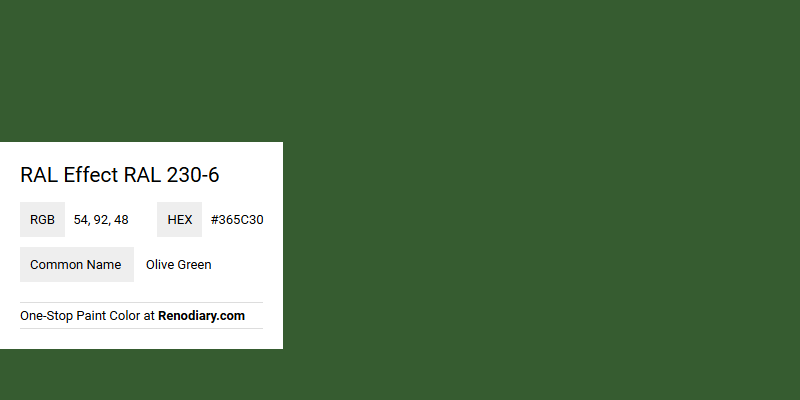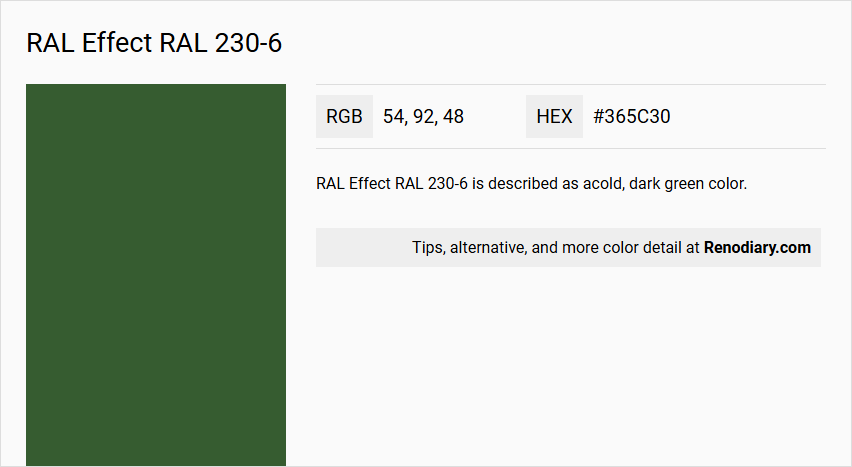
Olive green, represented by the RAL Effect code RAL 230-6 and RGB values 54, 92, 48, is a rich and earthy hue that evokes a sense of natural tranquility and balance. This shade, often associated with sophistication and timeless elegance, is perfect for designs aiming to project a connection with nature and environmental consciousness. Olive green's versatile and calming presence makes it a popular choice for both interior decor and fashion, seamlessly blending with various color palettes to create harmonious visual compositions.
Color Description
RAL Effect RAL 230-6 is described as a cold, dark green color.
Undertones
The undertone of RAL 230-6 is accurately described as a Green hue.
Color Values
- HEX value: #365C30
- RGB code: 54, 92, 48
- This color has a specific light reflectance value. Although the exact LRV is not provided in the sources, it is indicated as a dark color due to its low light reflectance.
Usage
RAL 230-6 can be used in various applications such as painting living room walls, trims, kitchen cabinets, bedroom accent walls, bathrooms, and house exteriors. It is part of the RAL Effect color range, which is commonly used in architecture, construction, industry, and road safety.
Atmosphere
This color can create a cool and calming atmosphere, suitable for spaces where a natural and serene ambiance is desired. The dark green hue can add depth and richness to the interior or exterior of a building.
RAL Effect RAL 230-6 Color Alternative
RAL Effect RAL 230-6 has become a sought-after color for many design projects, but designers often explore alternatives to address specific aesthetic needs. Dulux Woodland Fern 1 90GY 08/187, Little Greene Puck 298, and Sherwin Williams Evergreens SW 6447 provide distinct variations of green that can replace RAL Effect RAL 230-6 while offering unique undertones and depth. By selecting one of these alternatives, designers can achieve a balanced palette that harmonizes with diverse architectural and interior settings.
Bathroom
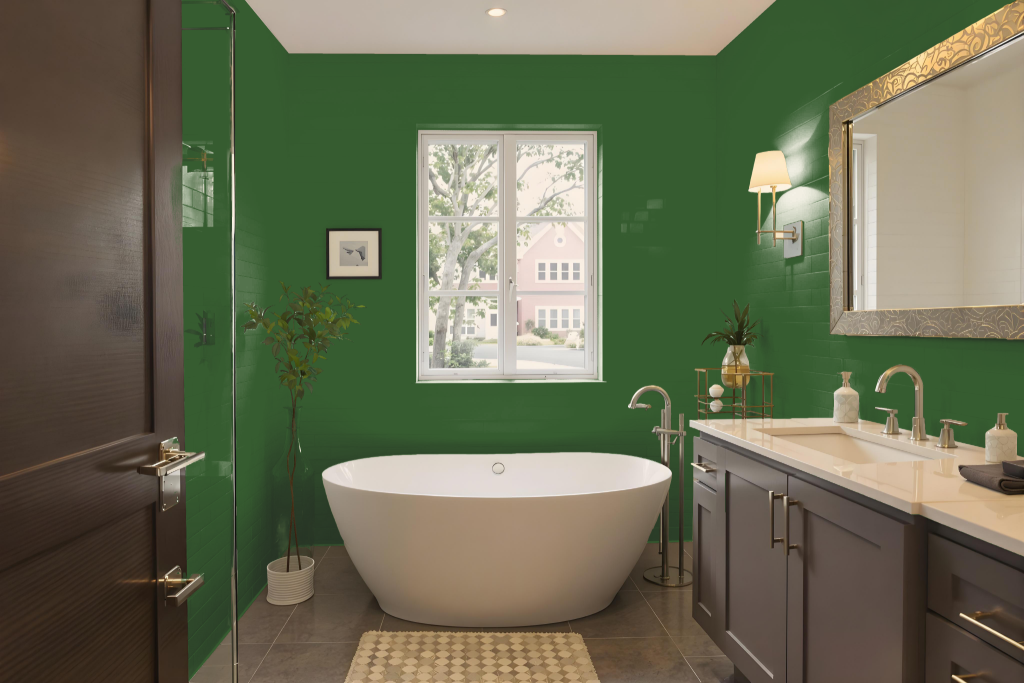
RAL Effect RAL 230-6 is an appealing bathroom color choice that brings an organic and earthy feel to the space while complementing fixtures and decor. Designed to withstand moisture and humidity common in bathrooms, it enhances natural elements such as plants, wooden cabinets, or stone tiles, creating a warm and inviting atmosphere.
This distinctive color also pairs well with metallic accents like chrome or brass, frequently used in bathroom hardware, adding a modern touch. Its application across walls, trims, and painted furniture fosters a cohesive design, ensuring that every element in the space harmonizes beautifully.
Bedroom
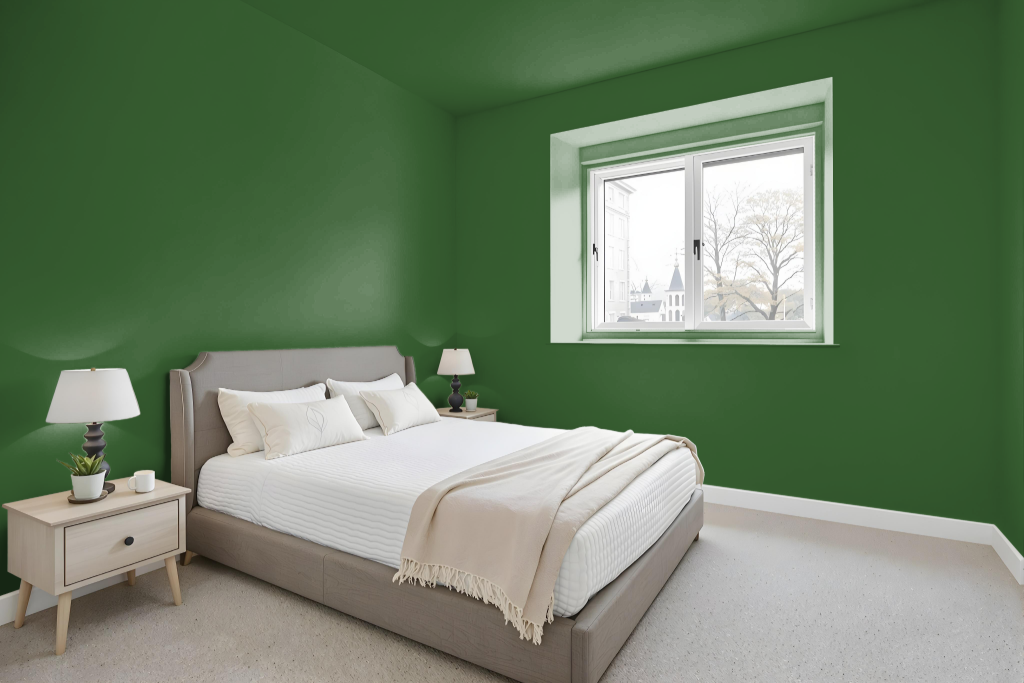
In bedroom settings, RAL 230-6 creates a calming and natural ambiance, lending an earthy tone that enhances the space. Its compatibility with materials such as wood, metal, and fabric makes it an excellent choice for walls, furniture, and accents, while pairing with neutral hues like black, davy grey, or antique brass adds a sophisticated contrast.
The color's harmony with softer shades contributes to a balanced and soothing atmosphere. Its durability and resistance to fading ensure that both indoor and outdoor elements retain a consistent and long-lasting aesthetic.
Kitchen
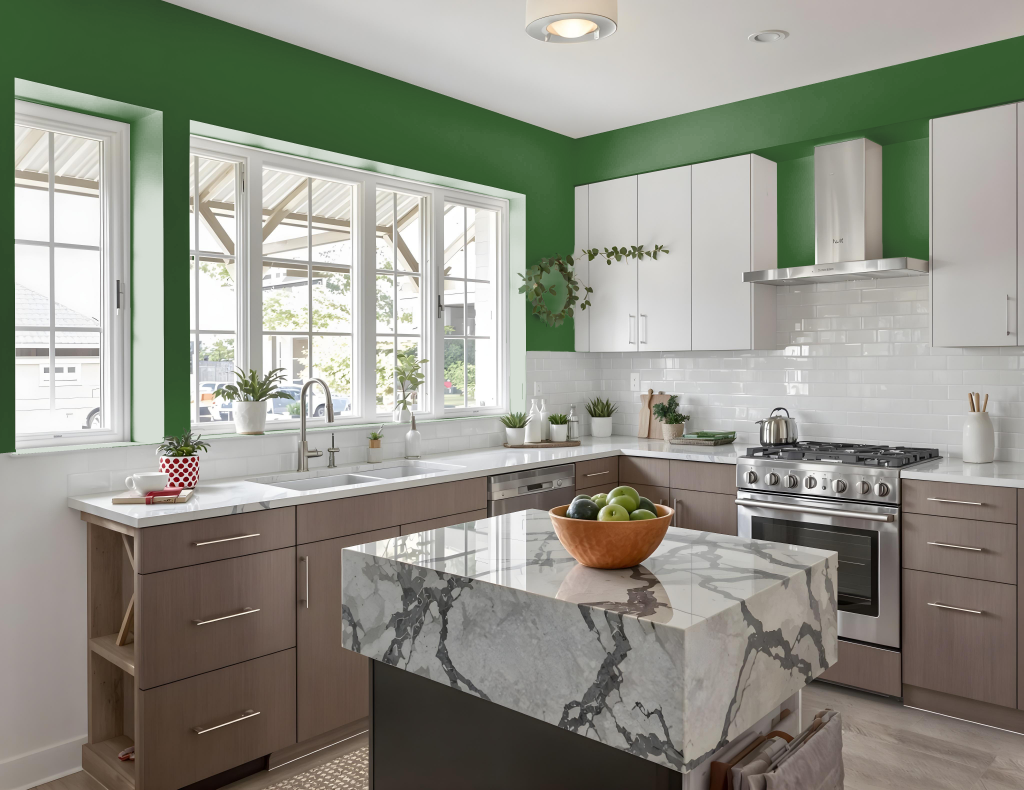
RAL Effect RAL 230-6 is an excellent choice for a kitchen color scheme, offering an appealing aesthetic that enhances the overall design. Its natural, earthy tone creates an organic ambiance ideal for complementing wooden cabinets, stone countertops, and lush greenery, while providing a striking contrast to metallic finishes found in stainless steel appliances and hardware.
The color is known for its durability and resistance to weathering and fading, maintaining its refined look whether applied indoors or outdoors. It works beautifully on a variety of surfaces—from walls and cabinets to furniture—helping to create a harmonious and modern environment throughout the space.
Living Room
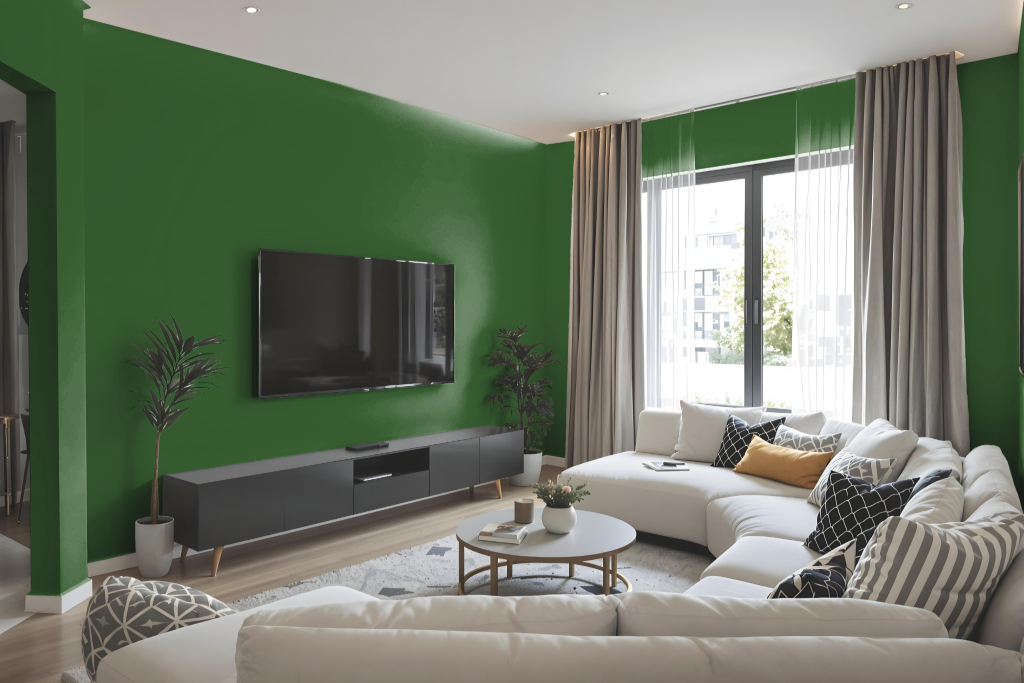
In living rooms, RAL Effect RAL 230-6 brings a natural, earthy ambiance that contrasts strikingly with lighter or metallic hues to establish a modern look. It sets a warm, organic tone that enhances the overall character of the space, making it an appealing choice for a stylish living room.
This hue extends its appeal to other spaces such as kitchens and bedrooms, where it introduces a sense of organic elegance or tranquility. Its durability in both indoor and outdoor applications, combined with its compatibility with a wide range of materials, makes it a practical option for designing varied environments.
Outdoor
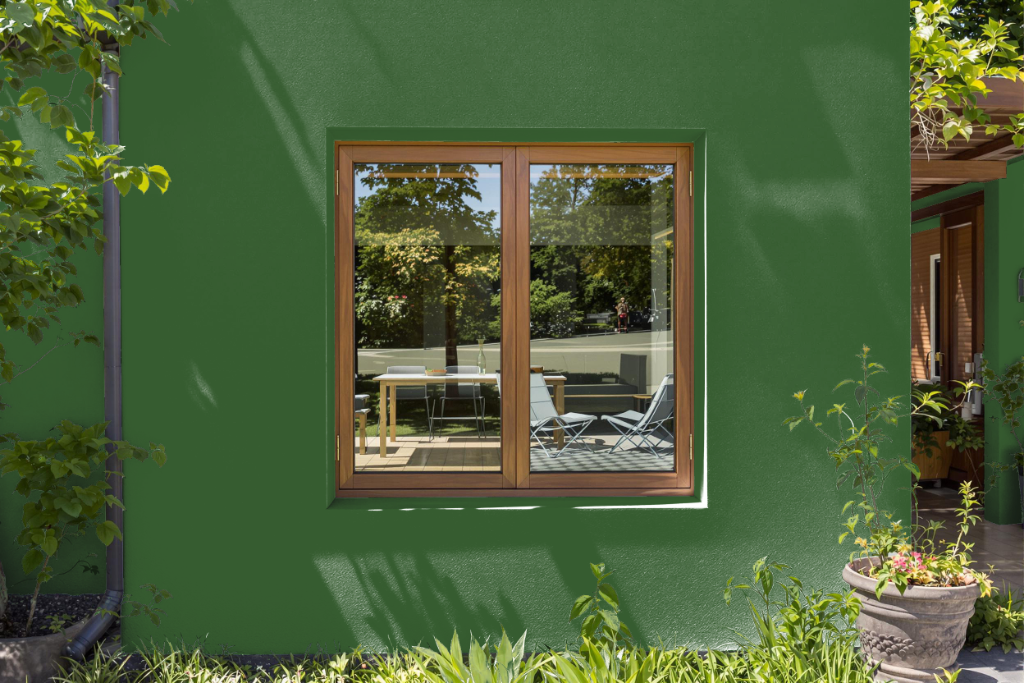
RAL Effect RAL 230-6 is a striking outdoor home color that boasts excellent resistance to weathering and fading, making it a smart choice for exterior painting projects. Its durability ensures that the color stays vibrant under a range of environmental conditions, providing lasting appeal for home façades.
In addition to its robust performance outdoors, this dynamic shade works well on multiple surfaces such as metal, wood, plastic, and fabric. The color creates modern, eye-catching contrasts with other hues and imparts a natural, earthy feel reminiscent of plant life, grass, or moss, making it an appealing option for enhancing exterior design aesthetics.
